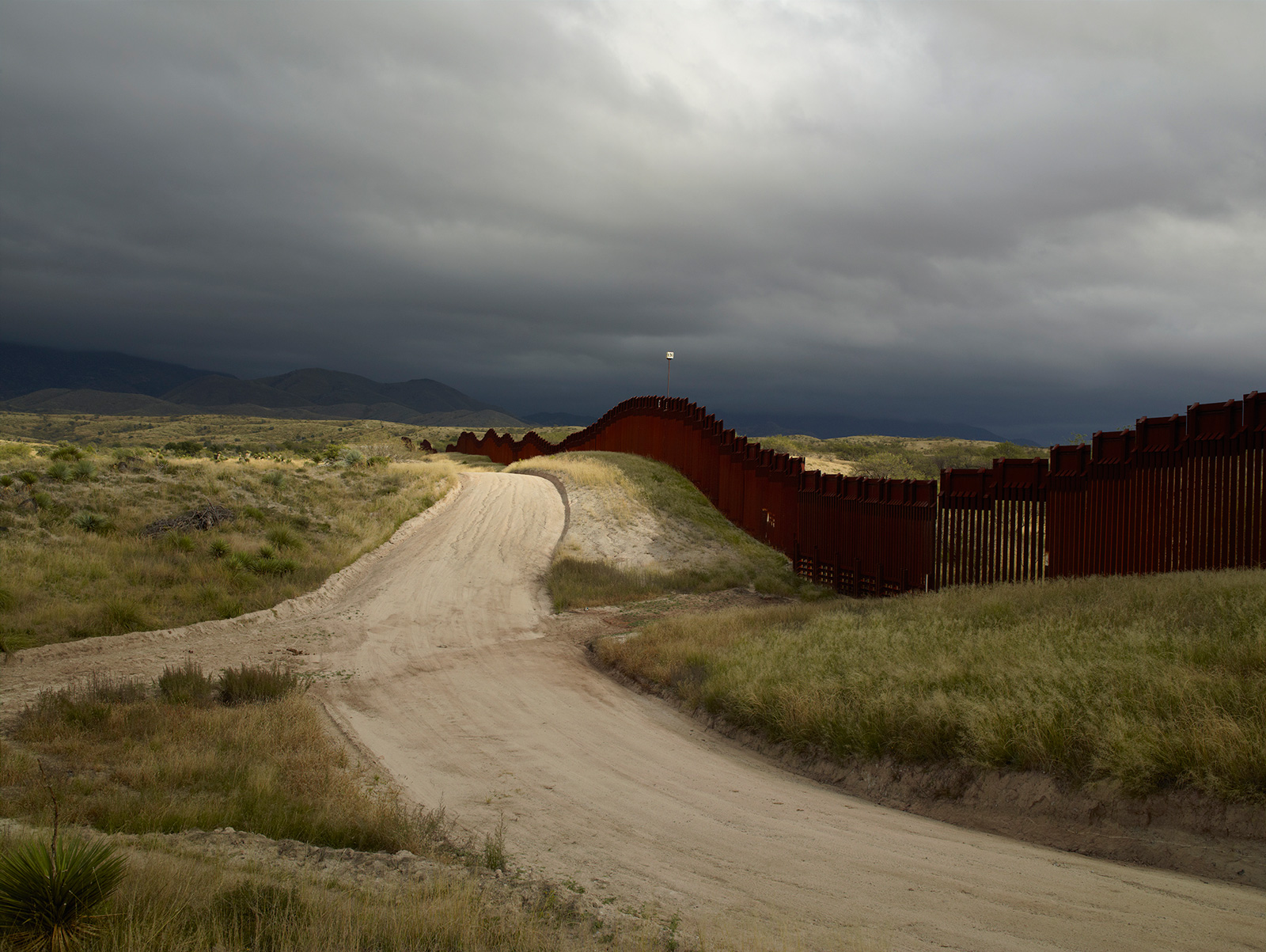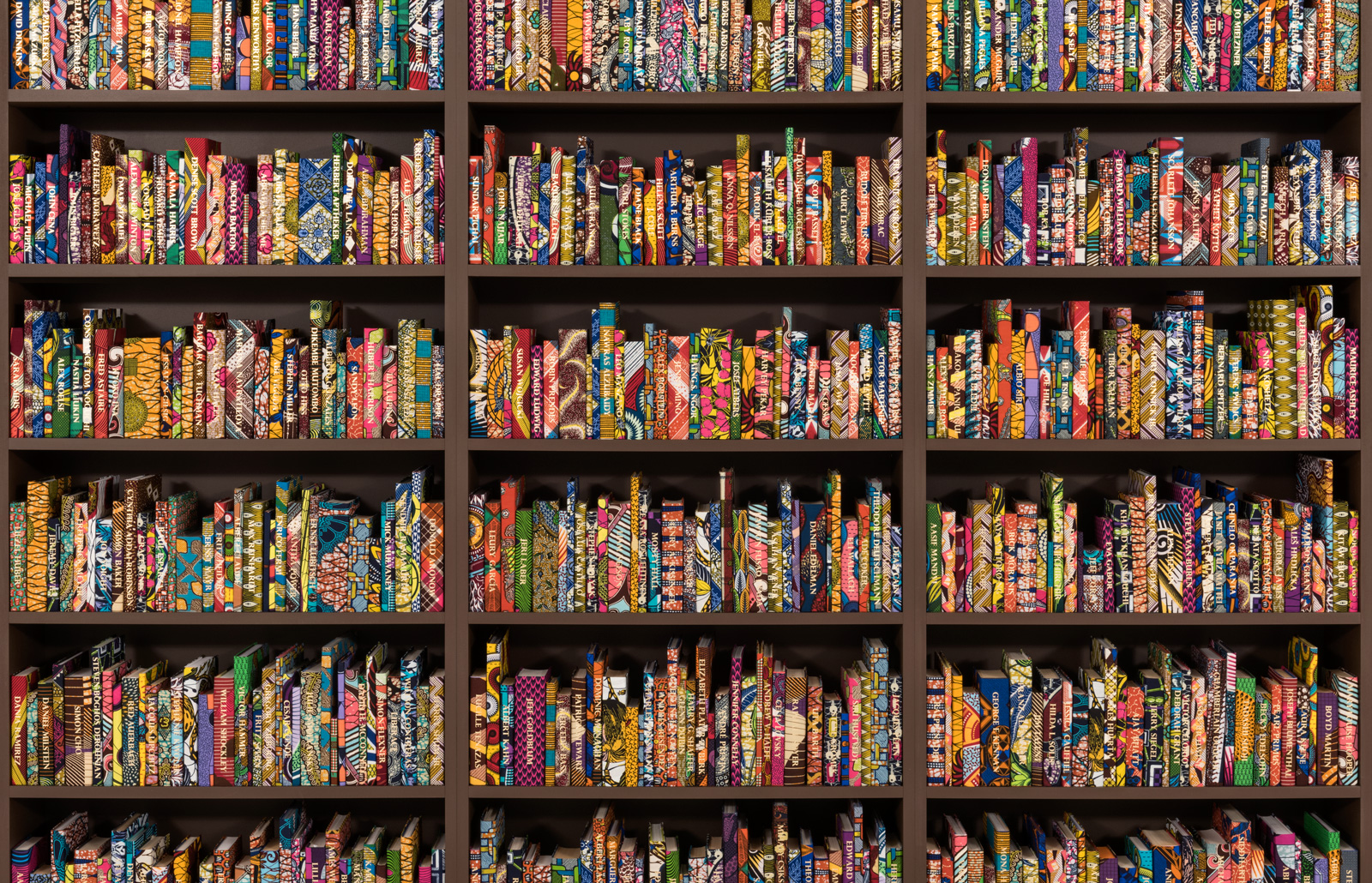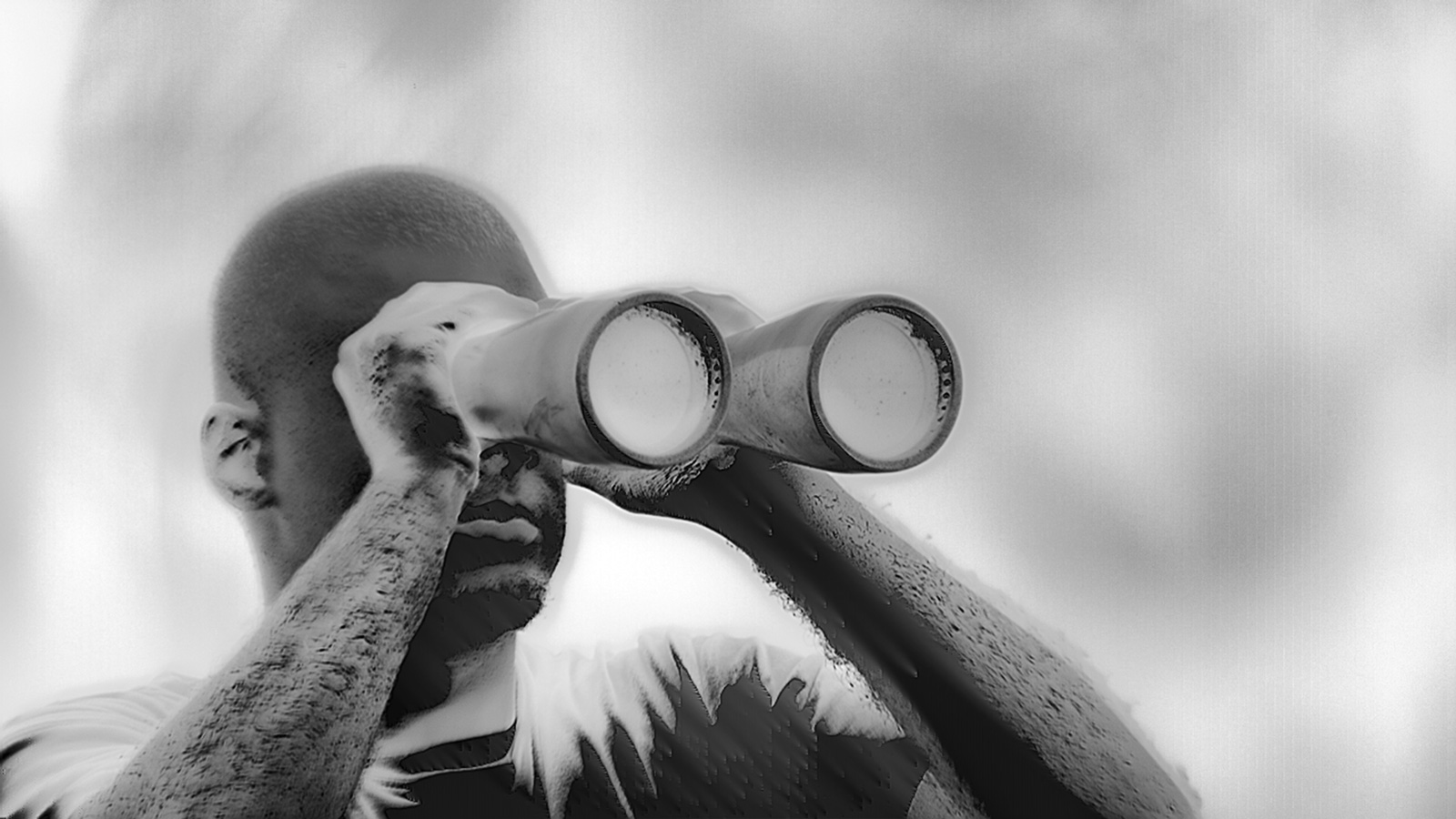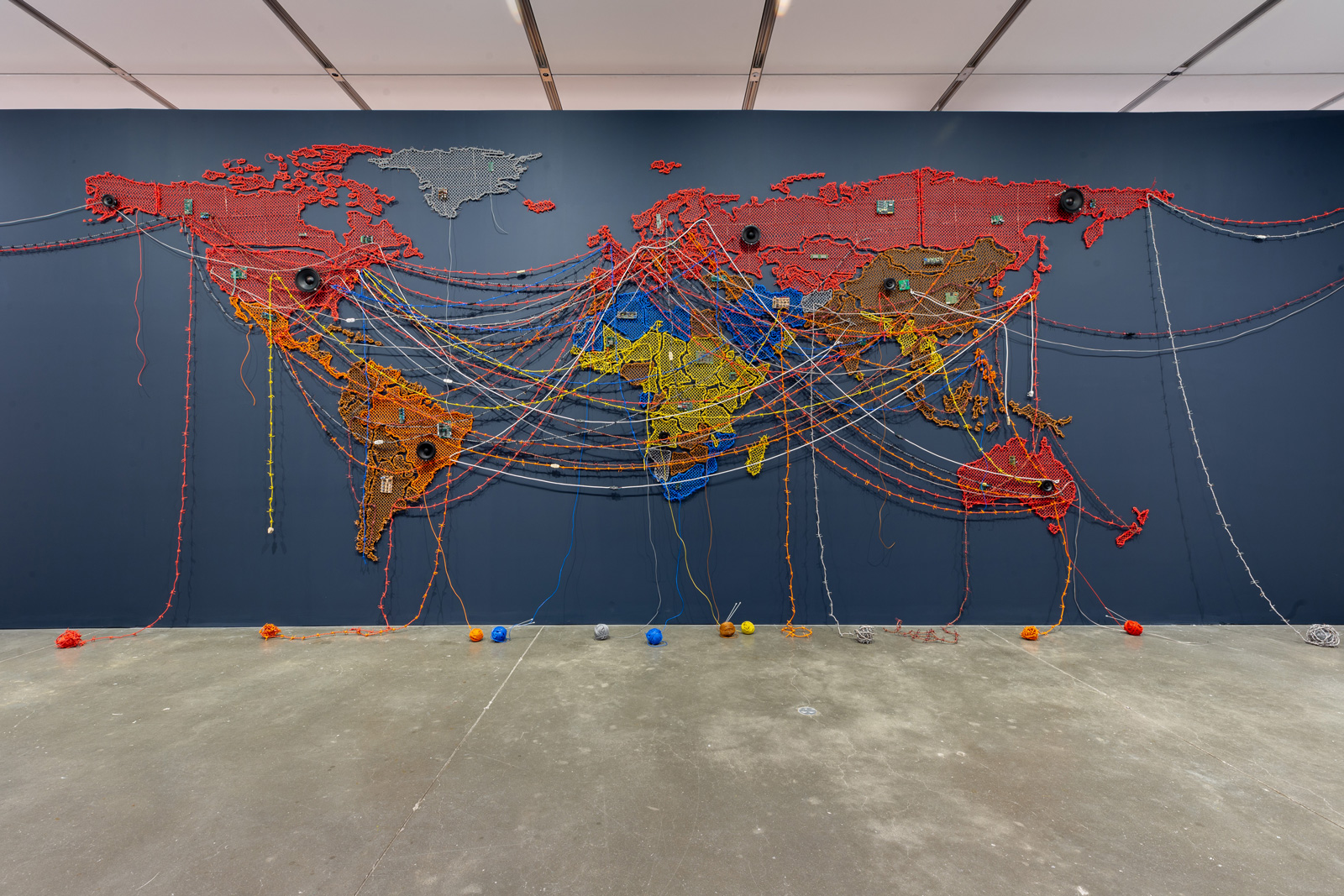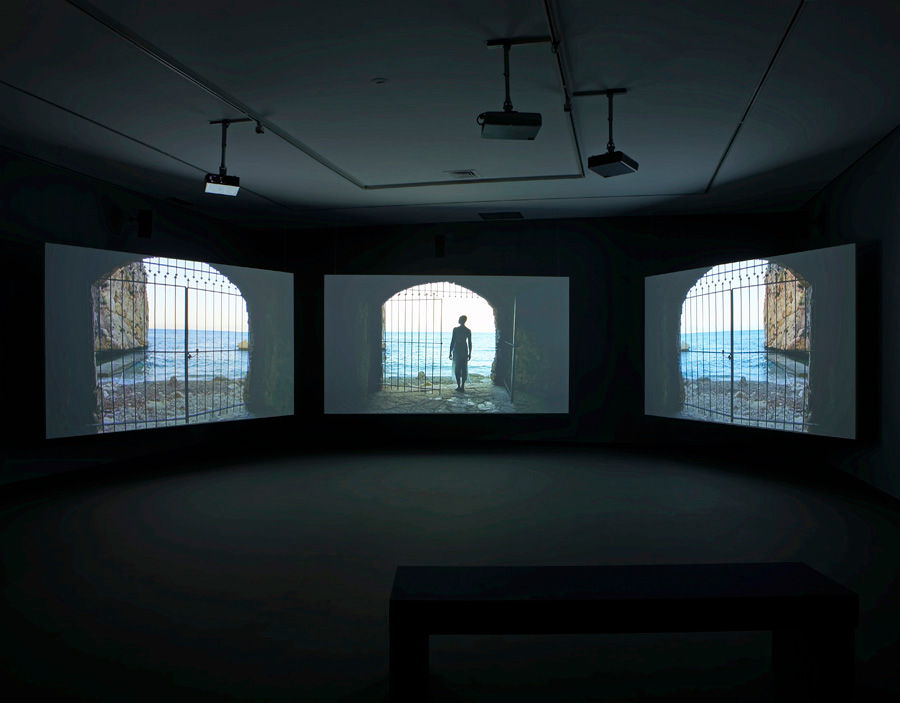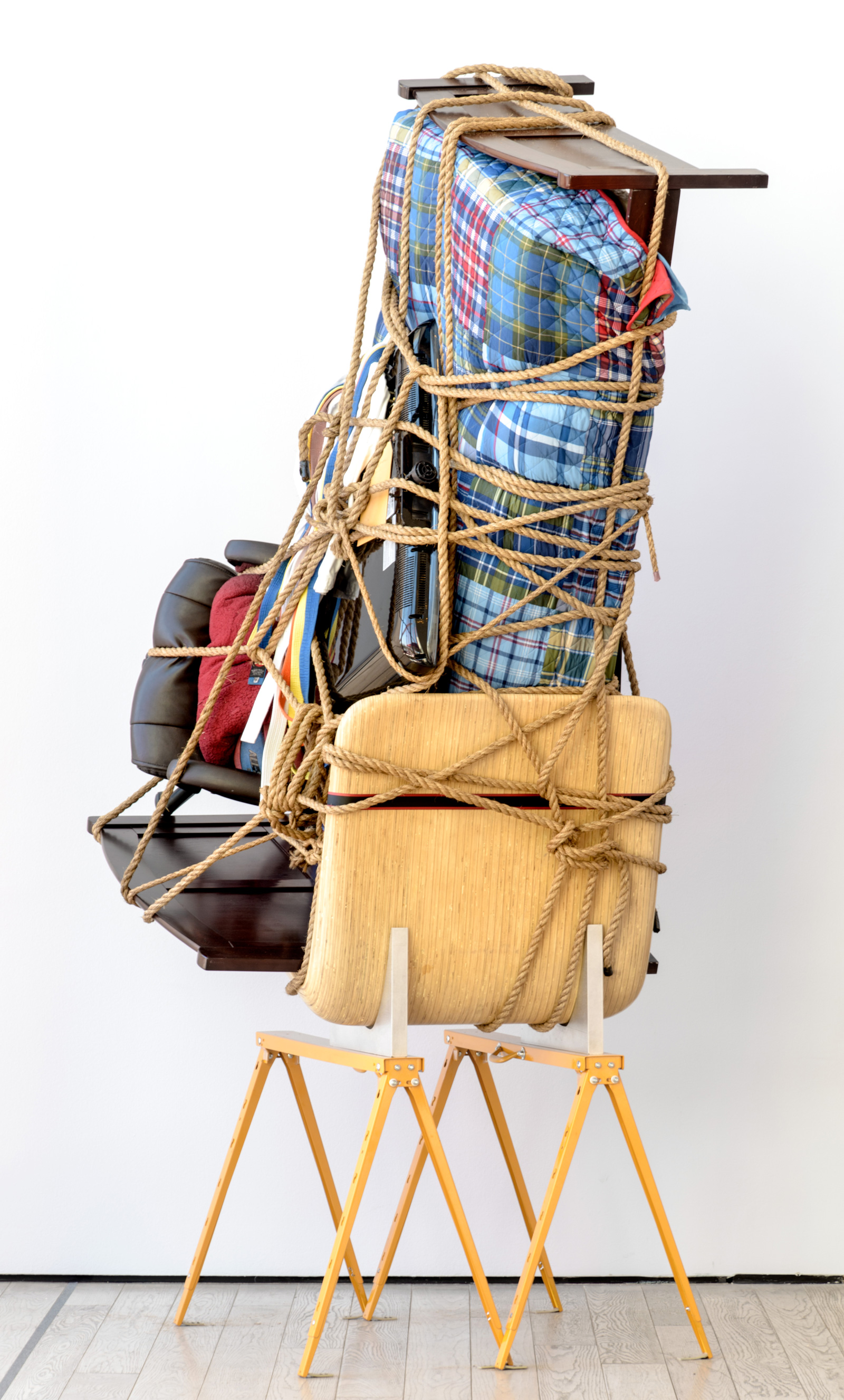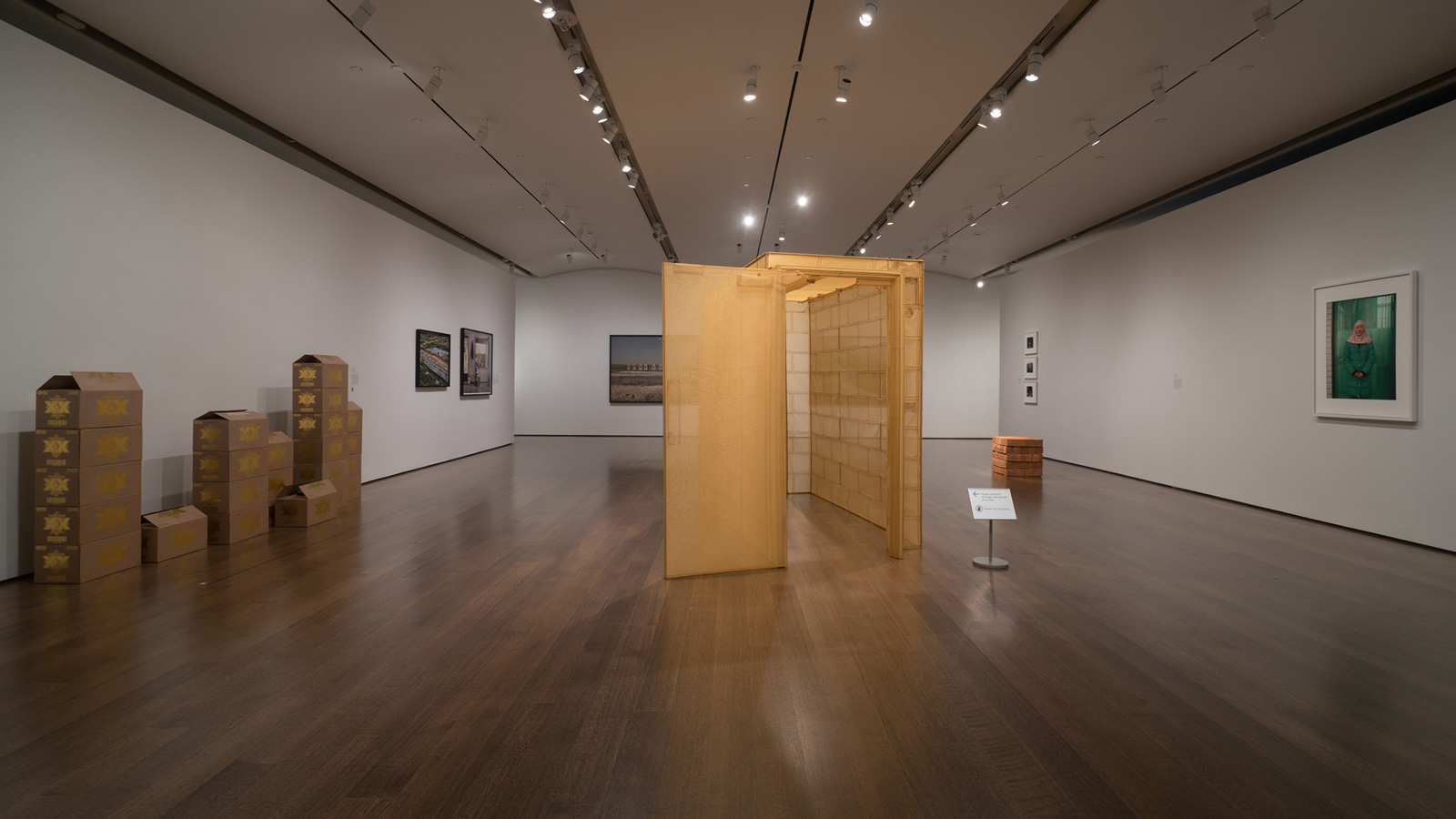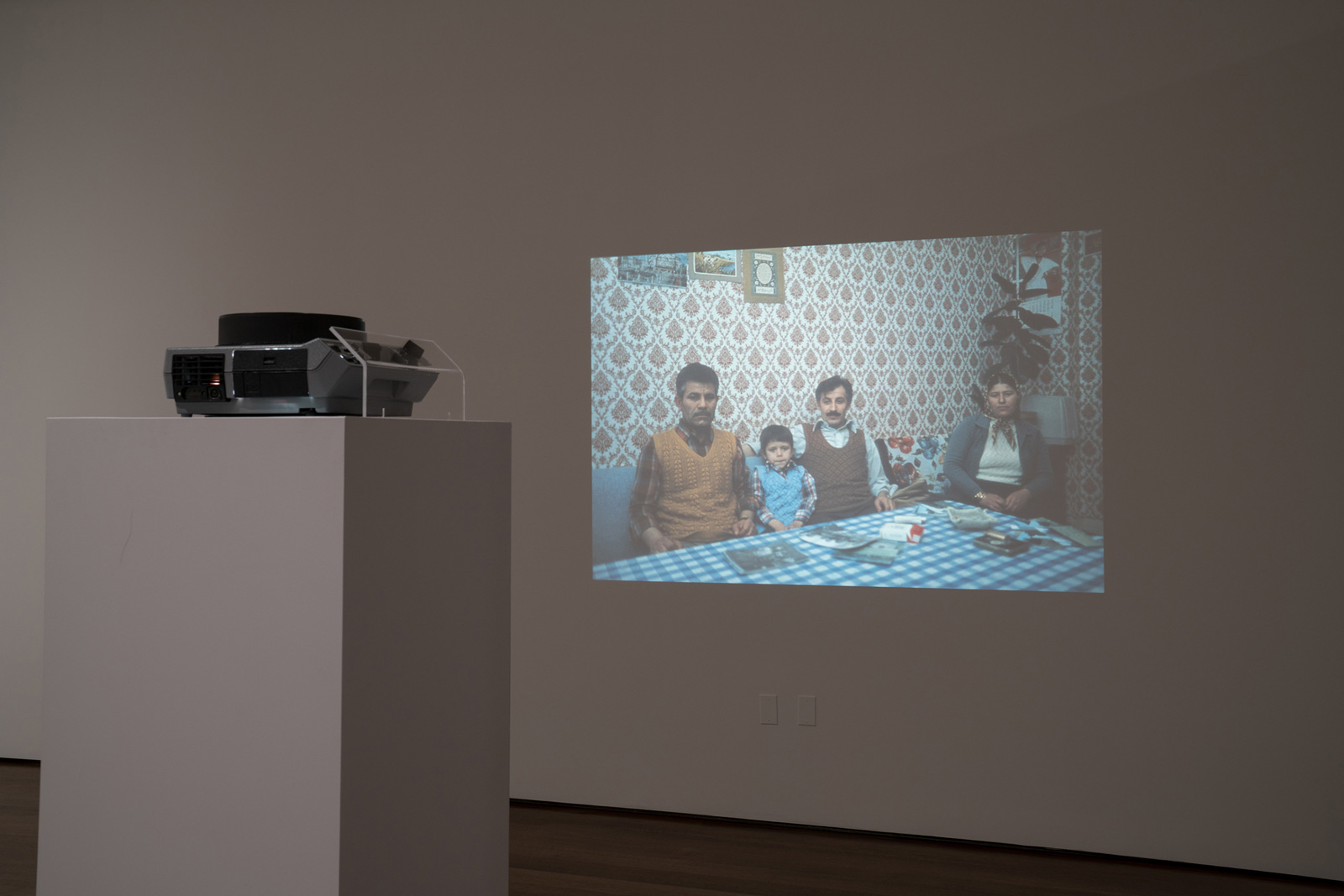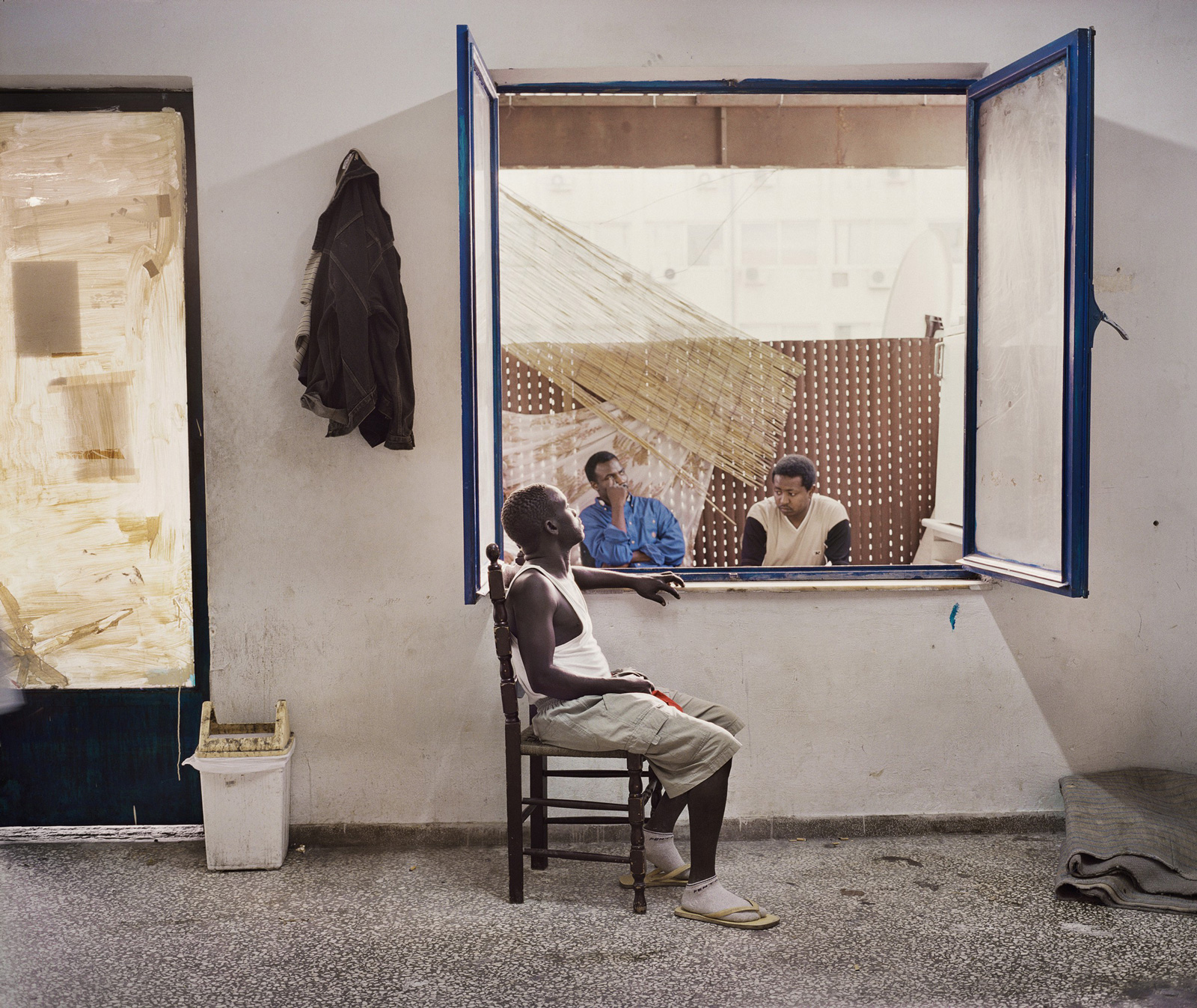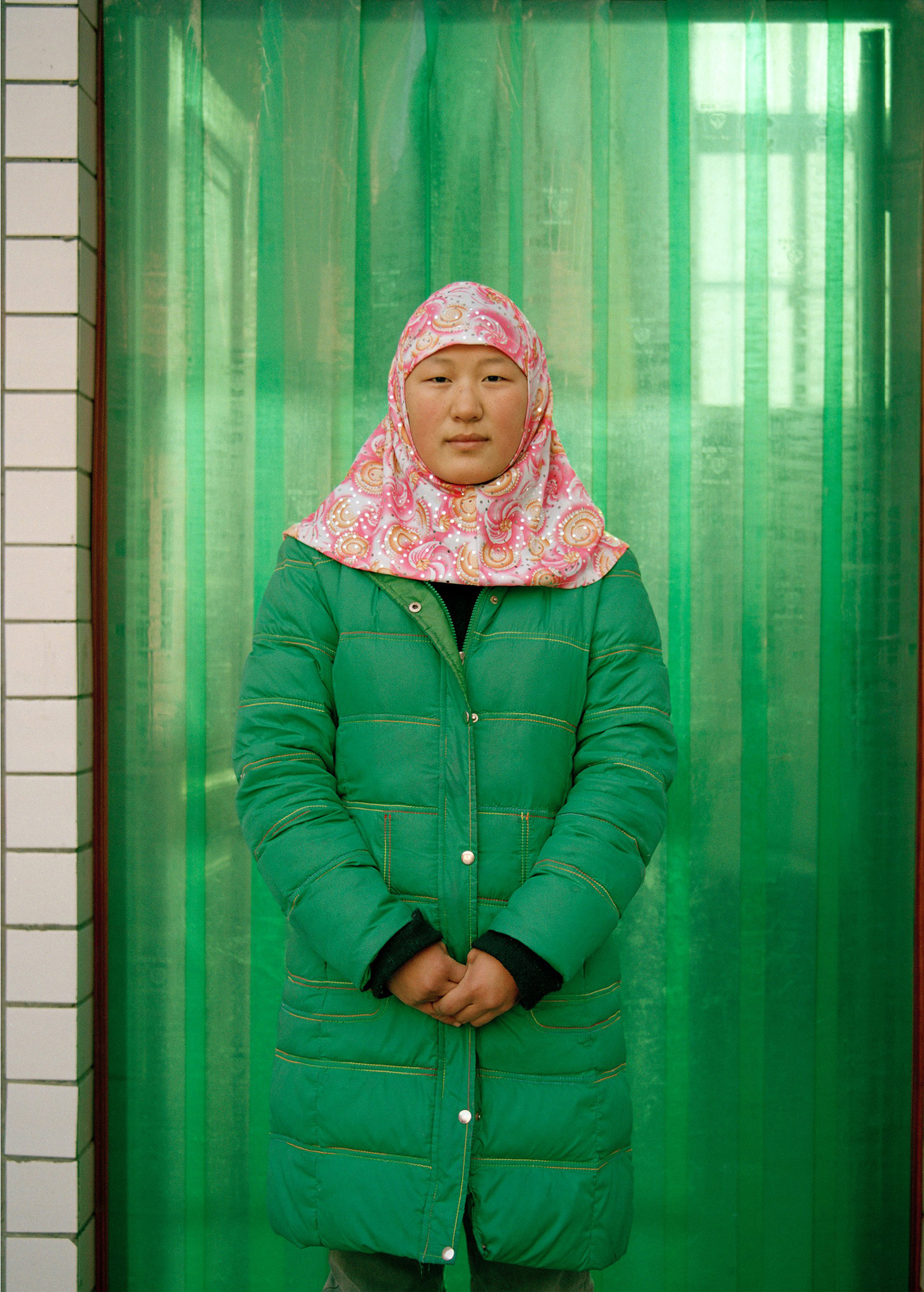Three exhibitions—one recent, two current—have foregrounded art that addresses perhaps the most pressing moral concern of our times: migration. The first of these, “The Warmth of Other Suns,” which closed at the Phillips Collection in Washington, D.C. in late September, was curated by Massimiliano Gioni and Natalie Bell of New York’s New Museum; Jason Farago, writing in The New York Times, described it as “poignant, solemn and utterly shaming.” Although the show comprised primarily recent work, it also included works by Honoré Daumier, Arshile Gorky, Jacob Lawrence, and Dorothea Lange, among others—an additional historical perspective reflected in the exhibition’s title that was taken from a line by Richard Wright (used as well by Isabel Wilkerson for her award-winning 2010 book on the Great Migration). The Phillips exhibition illuminated the connections between these different peoples and diverse iterations of a recurring human plight, juxtaposing Lewis Hine’s images of Ellis Island immigrants in the early twentieth century, Jack Delano’s photographs of fruit-picking migrants in the 1940s, Guillermo Arias’s 2018 photos of Honduran refugees, John Moore’s 2016–2018 photographs taken in Guatemala and along the Texas border, and Liu Xiaodong’s 2015 painting of Syrian refugees in Lesbos.
Each of the other two exhibitions—both currently on show in Boston: one at the Harvard Art Museums, the other, more extensive, at the Institute for Contemporary Art—takes a slightly different approach to the broader theme. The ICA exhibit, “When Home Won’t Let You Stay: Migration through Contemporary Art”—framed by a poem by Warsan Shire titled “Home,” available for visitors to read on laminated cards (“No one leaves home unless / home is the mouth of a shark”)—shows work produced by twenty international artists since 2000, offering, the wall text informs, “diverse artistic responses to migration, ranging from personal accounts to poetic meditations.” Albeit with detours (several side rooms display video installations), the exhibition’s broad disposition effectively marks a journey, from interiors, to the ocean, to the desert, and finally to the British-Nigerian artist Yinka Shonibare’s magnificent library. Here, thousands of books line the walls, covered in exuberantly patterned Dutch waxcloth and embossed with the names of American authors who are (or were) first- or second-generation immigrants or whose families participated in the Great Migration—among them, W.E.B. DuBois, Toni Morrison, and Jamaica Kincaid.
The pieces in this ICA exhibition are strikingly diverse: the visitor first encounters the multi-disciplinary Indian artist Reena Saini Kallat’s Woven Chronicle (2011–2016), a vast map of the world crisscrossed with brightly colored electrical wires, some of which dangle to skeins on the floor, suggesting the movements of populations. Punctuated by a sound installation, the map is dotted with speakers. Nearby is a sculpture of bundled personal belongings tied with rope, including, in addition to furniture, sundry items such as boxing gloves, men’s ties, and a tennis racket: this is Camilo Ontiveros’s Temporary Storage: The Belongings of Juan Manuel Montes (2017). Montes was the first known DACA recipient deported by the Trump administration; this bundle, assembled with his mother’s permission, comprises the belongings he was forced to leave behind. At first glance, this looks like a pile of junk; once I realized what these things are, and what they represent, I found myself lingering on each one, pondering its significance, and the significance of its loss—the devastating loss of the fully lived life of which it was a small part.
Two major three-channel video installations are central to the emotional force of the exhibition. The first, Incoming (2014–2017) by the Irish conceptual documentary photographer Richard Mosse, filmed using military-grade thermographic cameras (so that the images are essentially in negative), records the progress of migrants through Africa into Europe. We witness a truck crossing the desert overstuffed with humans, almost a pyramid of men in motion, their eyes closed against the wind. We watch a man drop to his knees and pray to Mecca, in the midst of travel. We observe a camp on fire, doused by firemen’s hoses. We see refugees wearing life-jackets, piling together. The eerie effect of the surveillance cameras is to suggest that we, the viewers, are spies or predators; and that the refugees are prey.
Advertisement
The scale of the three screens is imposing, and I was humbled and riveted before this dark record of struggle. I could not have anticipated its force, nor that of the other large-scale video installation, Isaac Julien’s Expedition trilogy, which includes Western Union: Small Boats (2007), filmed on the island of Lampedusa, where holidaymakers frolic in the azure water beneath impeccable skies while further down the beach the forlorn discarded garments of refugees swirl among the rocks. Eventually, we see their bodies lined tidily along the sand, covered by reflective tarps. Julien filmed this disturbingly prescient work more than a decade ago, inspired by documentary footage but using an aesthetic staging that makes it all the more unsettling.
Unsurprisingly, several artists are represented in multiple exhibitions, among them the American photographer Richard Misrach, one of whose pictures appears both in the ICA exhibit and in the Harvard Art Museums’ “Crossing Lines, Constructing Home: Displacement and Belonging in Contemporary Art”: in Wall, east of Nogales, Arizona/El muro, al este de Nogales, Arizona (2014), a lone dirt road winds toward the horizon beneath a lowering sky, while a snake-like black fence and its shadow undulate alongside it. The image is at once hauntingly beautiful and bleakly disturbing.
The Harvard exhibition, both smaller and less intently focused than the ICA’s, explores migration through a variety of lenses, loosely grouped under headings such as “Borders, Lines, Passages,” “Departures,” and “Causes and Consequences.” The material on display is often dark, but the exhibition, in the ensemble, exudes optimism. In some measure, this may be of a Lear-like sort (“The worst is not / So long as we can say, ‘This is the worst’”), but a number of the works attain a transcendence, revealing the resilience, creativity, even beauty that can arise from the challenges of displacement. Curated by Mary Schneider Enriquez and Makeda Best, “Crossing Lines” includes forty contemporary works almost exclusively derived from the museum’s own collection, many of them recent acquisitions. It is, in this sense, a celebration of new priorities at the Harvard Art Museums.
Visitors first encounter the installation of South Korean artist Do Hoh Suh, who also has work included in the ICA show. Hub, Ground Floor, Union Wharf, 23 Wenlock Rd, London N1 7SB (2016) is a meticulous reconstruction, out of yellow fabric mesh netting, of a basement hallway in the artist’s former home. Suh, who has described home as “infinitely transportable,” has rendered a three-dimensional version of a portion of a home for us to experience. There’s humor in this gesture, playfulness in our experience of it. Although the hallway is modest and, being made of mesh, suggestively semi-transparent, there is an exuberance about it, too. Rather like the nineteenth-century custom of the death mask, in which plaster casts were taken of the faces of the deceased, Suh has enabled us to experience an exact, if flimsy, replica of his lost hallway, down to its cinderblock grooves and suspended pipework. A much larger but similar, multi-work installation by Suh from 2018 is a central feature of the ICA’s exhibit; executed in pink and yellow, it dominates an entire room.
At the Harvard exhibition, Suh’s Hub sits alongside a pile of cardboard boxes, brightly gilded with the logo of Dos Equis beer: these belong to a work by Danh Vo, a Danish artist of Vietnamese origin who now lives between Berlin and Mexico City—his experience itself an example of the cultural hybridity that ensues from displacement. His series of boxes, salvaged in Mexico and decorated with gold leaf by artisans in Thailand, creates valuable artifacts out of the disposable— a commentary, as the curators’ note has it, on “the frictionless global consumption of products,” which achieve “hybrid identities as they cross national and cultural lines.”
To the right of Suh’s hallway stands a small, sober cairn of bricks: the blocks that make up Muro (2017), by the Mexican artist Bosco Sodi, come from a wall that the artist built in New York’s Washington Square Park on September 7, 2017, using 1,600 “clay timbers” fabricated in Oaxaca, Mexico, and marked with his initials. Disassembled in situ, the bricks were handed out to passersby to take home, thereby creating a collectively owned artwork. (Works by both Vo and Sodi also appeared in the earlier Phillips exhibition.)
“Crossing Lines, Constructing Home,” though less comprehensive than the ICA exhibit, seeks to show both migration’s painful realities and the possibilities for transformation or growth that may emerge from that experience. The aesthetic quality of the American photographer Richard Misrach’s images of the border co-exists unsettlingly with the implied violence they reveal, against both people and landscape. The wit of Suh’s Hub, or Sodi’s Muro, or Vo’s Dos XX is matched by that of Adál Maldonado’s The Passport (1995), in which the artist has manufactured impressively realistic false documents for a nation he calls El Spirit Republic de Puerto Rico. These artists are utterly serious in their provocations, but their irony leavens the somber weight of their themes.
Advertisement
Other pieces are more straightforwardly distressing: in the Northern Irish artist Willie Doherty’s video REMAINS (2013), a camera pans slowly over a littered waste-ground and lingers on the burning shell of a car. In a voice-over, a father describes how, during the Troubles, his son was “knee-capped” (the Irish paramilitaries’ practice of shooting to maim but not kill, as a punishment for suspected drug dealers or child molesters). Eugenio Dittborn’s large-scale multimedia collage 2nd History of the Human Face (Socket of the Eyes) Airmail Painting No. 66 (1989) evokes the artist’s home nation, Chile, during the Pinochet years, with its display of mugshots of men and women presumably “disappeared,” interspersed with childlike drawings of smiley faces in different shapes—here, more sinister than consoling.
Conceptual works by Clarissa Tossin and Emily Jacir afford the viewer a more detached, even emotionless, consideration of the exhibition’s themes. The Brazilian Tossin’s Spent (2009), comprising porcelain casts of 278 pieces of her bathroom trash, seems to ask us what we leave in our wake, in this global consumerist culture. While the Diasporan Palestinian Jacir’s La mia Roma (omaggio a sampietrini) (2016), a collection of Roman cobblestones recast in white synthetic gypsum, invites us to consider what her stones evoke, from the echo of daily footsteps to a possible weapon.
At the heart of the exhibition is the rarely seen projection of a series of eighty slides by the German photographer Candida Höfer, Türken in Deutschland (1979), or Turks in Germany, an early work by an artist chiefly known for her photographs of institutional buildings without people. Displayed here for the first time in the United States, the work is interesting not least for its format: the slides can be projected at various sizes, and at various speeds, to different effect. But slide projection, once cutting-edge, is now an obsolete technology, and as it insists upon the images’ ephemerality, it also evokes an earlier time. This is true for Höfer herself, who, in a recent talk at the museum, said: “It was one of my first projects. I never thought it was voyeuristic. But after a while… I felt guilty and I had to stop.”
The series depicts Turkish immigrants in Germany in the 1970s: Turks formed the largest wave of immigration in that country’s series of postwar recruitments of foreign workers, known as Gästarbeiter, or guest workers (others came from Italy, Spain, Portugal, Greece, Morocco, Tunisia, and Yugoslavia). Culturally distinct, Turkish immigrants maintained their own shops, restaurants, and social organizations. Höfer photographed around West Germany, including in Dusseldorf, Hamburg, Cologne, and Berlin, first in parks, then in the street, in shops, in restaurants, in people’s homes.
From today’s perspective, as Höfer implicitly acknowledges, there is something discomfiting about a white German woman artist’s undertaking of such a project: How, we might ask now, would the Turkish immigrants’ portrayals of themselves and their daily lives have differed? But Höfer’s photographs nevertheless provide a rich, layered tapestry of quotidian life: families picnicking; white-aproned butchers standing proudly behind glass cases containing their wares; grocers in front of neatly stacked towers of tins; groups of men playing cards or in spirited conversation; decorated shop windows in which Höfer’s own reflection can just be discerned. The artist’s meticulous eye for pattern and form makes these photographs visually thrilling; at the same time, they stand as a documentary record, however partial and imperfect, of a generation’s vital cultural and familial lives as Turkish immigrants in a doubtfully welcoming Germany.
The arresting photograph used to promote the Harvard exhibition, showing a strong, calm young woman of Central Asian appearance wearing a pink paisley-patterned hijab and a lime-green parka that blends perfectly with the sheer lime-green curtains behind her, is also uplifting. Taken in China by Lili Almog, Muslim Girl #14 (2009) belongs to a series entitled “The Other Half of the Sky,” of which the artist has written: “I wanted to present intimate portraits of ‘unseen women’—the culture of minority women—as an expression of the dignity and heroism of the private self reflected through time and culture.” In light of distressing reports of the persecution of China’s Muslim, mainly Uighur population, Almog’s photographs take on a darker hue; the viewer must reconcile that knowledge with the image of this young woman, who, at the moment when Almog took her portrait, stood as a hopeful vision. The complexity of this photograph, the way its meaning has evolved over time, reflects tensions and layers within the exhibition itself.
“When Home Won’t Let You Stay: Migration through Contemporary Art” is at the ICA, Boston, through January 26, 2020. “Crossing Lines, Constructing Home: Displacement and Belonging in Contemporary Art” is at Harvard Art Museums through January 5. “The Warmth of Other Suns: Stories of Global Displacement” was on view at the Phillips Collection from June 22 through September 22, 2019.


